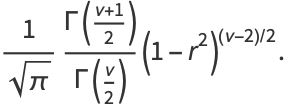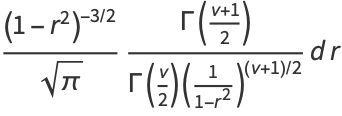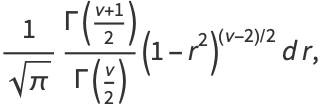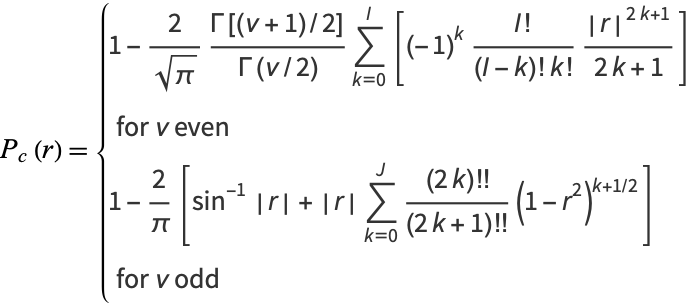

تاريخ الرياضيات

الاعداد و نظريتها

تاريخ التحليل

تار يخ الجبر

الهندسة و التبلوجي


الرياضيات في الحضارات المختلفة

العربية

اليونانية

البابلية

الصينية

المايا

المصرية

الهندية


الرياضيات المتقطعة

المنطق

اسس الرياضيات

فلسفة الرياضيات

مواضيع عامة في المنطق


الجبر

الجبر الخطي

الجبر المجرد

الجبر البولياني

مواضيع عامة في الجبر

الضبابية

نظرية المجموعات

نظرية الزمر

نظرية الحلقات والحقول

نظرية الاعداد

نظرية الفئات

حساب المتجهات

المتتاليات-المتسلسلات

المصفوفات و نظريتها

المثلثات


الهندسة

الهندسة المستوية

الهندسة غير المستوية

مواضيع عامة في الهندسة

التفاضل و التكامل


المعادلات التفاضلية و التكاملية

معادلات تفاضلية

معادلات تكاملية

مواضيع عامة في المعادلات


التحليل

التحليل العددي

التحليل العقدي

التحليل الدالي

مواضيع عامة في التحليل

التحليل الحقيقي

التبلوجيا

نظرية الالعاب

الاحتمالات و الاحصاء

نظرية التحكم

بحوث العمليات

نظرية الكم

الشفرات

الرياضيات التطبيقية

نظريات ومبرهنات


علماء الرياضيات

500AD

500-1499

1000to1499

1500to1599

1600to1649

1650to1699

1700to1749

1750to1779

1780to1799

1800to1819

1820to1829

1830to1839

1840to1849

1850to1859

1860to1864

1865to1869

1870to1874

1875to1879

1880to1884

1885to1889

1890to1894

1895to1899

1900to1904

1905to1909

1910to1914

1915to1919

1920to1924

1925to1929

1930to1939

1940to the present

علماء الرياضيات

الرياضيات في العلوم الاخرى

بحوث و اطاريح جامعية

هل تعلم

طرائق التدريس

الرياضيات العامة

نظرية البيان
Correlation Coefficient--Bivariate Normal Distribution
المؤلف:
Bevington, P. R.
المصدر:
Data Reduction and Error Analysis for the Physical Sciences. New York: McGraw-Hill, 1969.
الجزء والصفحة:
...
27-3-2021
3817
Correlation Coefficient--Bivariate Normal Distribution
For a bivariate normal distribution, the distribution of correlation coefficients is given by
 |
 |
 |
(1) |
 |
 |
 |
(2) |
 |
 |
![((N-2)Gamma(N-1)(1-rho^2)^((N-1)/2)(1-r^2)^((N-4)/2))/(sqrt(2pi)Gamma(N-1/2)(1-rhor)^(N-3/2))×[1+1/4(rhor+1)/(2N-1)+9/(16)((rhor+1)^2)/((2N-1)(2N+1))+...],](https://mathworld.wolfram.com/images/equations/CorrelationCoefficientBivariateNormalDistribution/Inline9.gif) |
(3) |
where  is the population correlation coefficient,
is the population correlation coefficient,  is a hypergeometric function, and
is a hypergeometric function, and  is the gamma function (Kenney and Keeping 1951, pp. 217-221). The moments are
is the gamma function (Kenney and Keeping 1951, pp. 217-221). The moments are
 |
 |
 |
(4) |
 |
 |
 |
(5) |
 |
 |
 |
(6) |
 |
 |
 |
(7) |
where  . If the variates are uncorrelated, then
. If the variates are uncorrelated, then  and
and
 |
 |
 |
(8) |
 |
 |
![(Gamma(N-1/2)2^(3/2-N)sqrt(pi))/([Gamma(N/2)]^2),](https://mathworld.wolfram.com/images/equations/CorrelationCoefficientBivariateNormalDistribution/Inline32.gif) |
(9) |
so
 |
 |
![((N-2)Gamma(N-1))/(sqrt(2pi)Gamma(N-1/2))(1-r^2)^((N-4)/2)(Gamma(N-1/2)2^(3/2-N)sqrt(pi))/([Gamma(N/2)]^2)](https://mathworld.wolfram.com/images/equations/CorrelationCoefficientBivariateNormalDistribution/Inline35.gif) |
(10) |
 |
 |
![(2^(1-N)(N-2)Gamma(N-1))/([Gamma(N/2)]^2)(1-r^2)^((N-4)/2).](https://mathworld.wolfram.com/images/equations/CorrelationCoefficientBivariateNormalDistribution/Inline38.gif) |
(11) |
But from the Legendre duplication formula,
 |
(12) |
so
 |
 |
![((2^(1-N))(2^(N-2))(N-2)Gamma(N/2)Gamma((N-1)/2))/(sqrt(pi)[Gamma(N/2)]^2)(1-r^2)^((N-4)/2)](https://mathworld.wolfram.com/images/equations/CorrelationCoefficientBivariateNormalDistribution/Inline41.gif) |
(13) |
 |
 |
 |
(14) |
 |
 |
 |
(15) |
 |
 |
 |
(16) |
The uncorrelated case can be derived more simply by letting  be the true slope, so that
be the true slope, so that  . Then
. Then
 |
(17) |
is distributed as Student's t with  degrees of freedom. Let the population regression coefficient
degrees of freedom. Let the population regression coefficient  be 0, then
be 0, then  , so
, so
 |
(18) |
and the distribution is
 |
(19) |
Plugging in for  and using
and using
 |
 |
![sqrt(nu)[(sqrt(1-r^2)-r(1/2)(-2r)(1-r^2)^(-1/2))/(1-r^2)]dr](https://mathworld.wolfram.com/images/equations/CorrelationCoefficientBivariateNormalDistribution/Inline59.gif) |
(20) |
 |
 |
 |
(21) |
 |
 |
 |
(22) |
gives
 |
 |
![1/(sqrt(nupi))(Gamma((nu+1)/2))/(Gamma(nu/2)[1+(r^2nu)/((1-r^2)nu)]^((nu+1)/2))sqrt(nu/((1-r)^3))dr](https://mathworld.wolfram.com/images/equations/CorrelationCoefficientBivariateNormalDistribution/Inline68.gif) |
(23) |
 |
 |
 |
(24) |
 |
 |
 |
(25) |
 |
 |
 |
(26) |
so
 |
(27) |
as before. See Bevington (1969, pp. 122-123) or Pugh and Winslow (1966, §12-8). If we are interested instead in the probability that a correlation coefficient would be obtained  , where
, where  is the observed coefficient, then
is the observed coefficient, then
 |
 |
 |
(28) |
 |
 |
 |
(29) |
 |
 |
 |
(30) |
Let  . For even
. For even  , the exponent
, the exponent  is an integer so, by the binomial theorem,
is an integer so, by the binomial theorem,
 |
(31) |
and
 |
 |
 |
(32) |
 |
 |
 |
(33) |
For odd  , the integral is
, the integral is
 |
 |
 |
(34) |
 |
 |
 |
(35) |
Let  so
so  , then
, then
 |
 |
![1-2/(sqrt(pi))(Gamma[((nu+1)/2)])/(Gamma(nu/2))int_0^(sin^(-1)|r|)cos^(nu-2)xcosxdx](https://mathworld.wolfram.com/images/equations/CorrelationCoefficientBivariateNormalDistribution/Inline109.gif) |
(36) |
 |
 |
 |
(37) |
But  is odd, so
is odd, so  is even. Therefore
is even. Therefore
 |
(38) |
Combining with the result from the cosine integral gives
![P_c(r)=1-2/pi((2n)!!(2n-1)!!)/((2n-1)!!(2n)!!)[sinxsum_(k=0)^(n-1)((2k)!!)/((2k+1)!!)cos^(2k+1)x+x]_0^(sin^(-1)|r|).](https://mathworld.wolfram.com/images/equations/CorrelationCoefficientBivariateNormalDistribution/NumberedEquation8.gif) |
(39) |
Use
 |
(40) |
and define  , then
, then
 |
(41) |
(In Bevington 1969, this is given incorrectly.) Combining the correct solutions
 |
(42) |
If  , a skew distribution is obtained, but the variable
, a skew distribution is obtained, but the variable  defined by
defined by
 |
(43) |
is approximately normal with
 |
 |
 |
(44) |
 |
 |
 |
(45) |
(Kenney and Keeping 1962, p. 266).
Let  be the slope of a best-fit line, then the multiple correlation coefficient is
be the slope of a best-fit line, then the multiple correlation coefficient is
 |
(46) |
where  is the sample variance.
is the sample variance.
On the surface of a sphere,
 |
(47) |
where  is a differential solid angle. This definition guarantees that
is a differential solid angle. This definition guarantees that  . If
. If  and
and  are expanded in real spherical harmonics,
are expanded in real spherical harmonics,
 |
 |
![sum_(l=0)^(infty)sum_(m=0)^(l)[C_l^mY_l^m^c(theta,phi)sin(mphi)+S_l^mY_l^m^s(theta,phi)]](https://mathworld.wolfram.com/images/equations/CorrelationCoefficientBivariateNormalDistribution/Inline132.gif) |
(48) |
 |
 |
![sum_(l=0)^(infty)sum_(m=0)^(l)[A_l^mY_l^m^c(theta,phi)sin(mphi)+B_l^mY_l^m^s(theta,phi)].](https://mathworld.wolfram.com/images/equations/CorrelationCoefficientBivariateNormalDistribution/Inline135.gif) |
(49) |
Then
 |
(50) |
The confidence levels are then given by
 |
 |
 |
(51) |
 |
 |
 |
(52) |
 |
 |
![r[1+1/2s^2(1+3/4s^2)]=1/8r(15-10r^2+3r^4)](https://mathworld.wolfram.com/images/equations/CorrelationCoefficientBivariateNormalDistribution/Inline144.gif) |
(53) |
 |
 |
(54) |
|
 |
 |
 |
(55) |
where
 |
(56) |
(Eckhardt 1984).
REFERENCES:
Bevington, P. R. Data Reduction and Error Analysis for the Physical Sciences. New York: McGraw-Hill, 1969.
Eckhardt, D. H. "Correlations Between Global Features of Terrestrial Fields." Math. Geology 16, 155-171, 1984.
Kenney, J. F. and Keeping, E. S. Mathematics of Statistics, Pt. 2, 2nd ed. Princeton, NJ: Van Nostrand, 1951.
Kenney, J. F. and Keeping, E. S. Mathematics of Statistics, Pt. 1, 3rd ed. Princeton, NJ: Van Nostrand, 1962.
Pugh, E. M. and Winslow, G. H. The Analysis of Physical Measurements. Reading, MA: Addison-Wesley, 1966.
 الاكثر قراءة في الاحتمالات و الاحصاء
الاكثر قراءة في الاحتمالات و الاحصاء
 اخر الاخبار
اخر الاخبار
اخبار العتبة العباسية المقدسة

الآخبار الصحية















 (نوافذ).. إصدار أدبي يوثق القصص الفائزة في مسابقة الإمام العسكري (عليه السلام)
(نوافذ).. إصدار أدبي يوثق القصص الفائزة في مسابقة الإمام العسكري (عليه السلام) قسم الشؤون الفكرية يصدر مجموعة قصصية بعنوان (قلوب بلا مأوى)
قسم الشؤون الفكرية يصدر مجموعة قصصية بعنوان (قلوب بلا مأوى) قسم الشؤون الفكرية يصدر مجموعة قصصية بعنوان (قلوب بلا مأوى)
قسم الشؤون الفكرية يصدر مجموعة قصصية بعنوان (قلوب بلا مأوى)


















